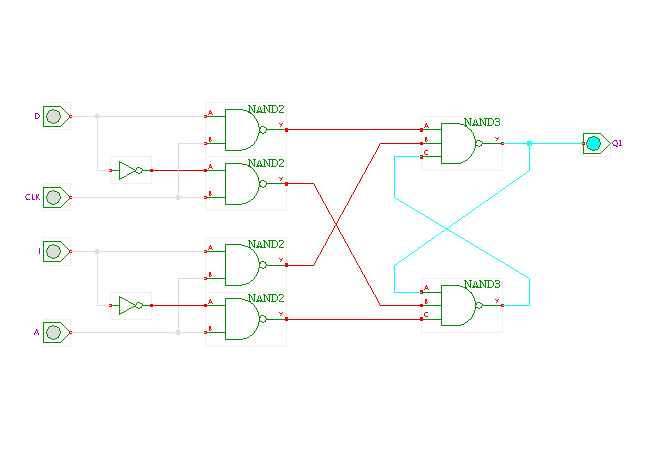

 |  |
 Description
This applet shows the so-called LSSD D-type latch.
The level-sensitive scan design technique was developed and pioneered
by IBM, and forms the basis for a structured approach to the design
of testable circuits.
Description
This applet shows the so-called LSSD D-type latch.
The level-sensitive scan design technique was developed and pioneered
by IBM, and forms the basis for a structured approach to the design
of testable circuits.
Click the input switches, or type the 'd', 'c', 'i', 'a' bindkeys to control the data, clock, shift-in, and shift-enable inputs of the circuit.
The latch shown here has the usual data input D and clock input CLK. It also has a second set of inputs I and A, where A functions as a separate clock input (shift-enable) and I acts as a second data input (shift-in). In standard operation, I and A are held low, and the circuit operates like a standard D-type latch.
For shifting data, C and D are held low, and the latch is loaded via the I input and clock-pulses on the A signal.
For a detailed description, see chapter 7.3.3 of Weste and Eshragian, Principles of VLSI design.
Run the applet | Run the editor (via Webstart)